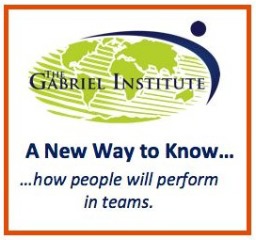 Friend--
Friend--
I've [Ted Strickland] just finished delivering my third State of the State speech, and I wanted to share it with you.
Across the country, Americans are grappling with the worst economic climate in 80 years. In Ohio, too, we've seen the devastating effects of a crisis caused by failed Washington policies and Wall Street greed.
But while the Wall Street recession has knocked Ohio down, we're not staying down. The state of our state is unyielding. With a long-term approach that focuses on creating jobs from the bottom up, Ohio can emerge from this global recession stronger than ever.
Read the full State of the State address here to learn how we're building an Ohio that can lead once again.
DAVID WILHELM, CO CHAIR OF THE OHIO THIRD FRONTIERS PROGRAM AND FELLOW BOARD MEMBER OF NASVF WITH ME, SUGGESTS THAT GOVERNOR STRICKLAND UNDERSTANDS THE ROLE OF INNOVATION IN THEIR STATES ECONOMIC GROWTH AS WELL AS ANY GOVERNOR OR POLITICAL LEADER.
I TEND TO AGREE, RICH BENDIS

 USAJobs - The Director, Technology Innovation Program (TIP) serves as the executive responsible for managing and leading this critical program for NIST. The TIP was established as part of the America COMPETES Act (P.L. 110-69) to assist United States businesses and institutions of higher education or other organizations, such as national laboratories and nonprofit research institutions, to support, promote, and accelerate innovation in the United States through high-risk, high-reward research in areas of critical national need.
USAJobs - The Director, Technology Innovation Program (TIP) serves as the executive responsible for managing and leading this critical program for NIST. The TIP was established as part of the America COMPETES Act (P.L. 110-69) to assist United States businesses and institutions of higher education or other organizations, such as national laboratories and nonprofit research institutions, to support, promote, and accelerate innovation in the United States through high-risk, high-reward research in areas of critical national need. IN the glory days of the digital photo frame business, when his products were still a novelty and shoppers were flush with cash, getting a bank loan to manufacture them was a cinch, Michael Levy says.
IN the glory days of the digital photo frame business, when his products were still a novelty and shoppers were flush with cash, getting a bank loan to manufacture them was a cinch, Michael Levy says.


 Big news for late on a Friday afternoon:
Big news for late on a Friday afternoon:  One of the most exhilarating but also most difficult things about creating a start-up from scratch and trying to nurture it to success is the feeling that everything is tied up in your company - not just your heart and soul, but all your financial hopes too.
One of the most exhilarating but also most difficult things about creating a start-up from scratch and trying to nurture it to success is the feeling that everything is tied up in your company - not just your heart and soul, but all your financial hopes too.
 If someone asked members of your Innovation Team about "ownership" of a current initiative, would individuals reply, "Yes"?
If someone asked members of your Innovation Team about "ownership" of a current initiative, would individuals reply, "Yes"?
 Seven projects in this province are getting up to $13.8 million from ACOA's Atlantic Innovation Fund. The announcement was made yesterday at the Marine Institute by Minister Responsible for Newfoundland and Labrador Peter MacKay. Among the projects funded is bottom trawl fishing technology, as well as autonomous underwater vehicles, high frequency radar applications and genetics. Projects selected for AIF funding are PanGeo Subsea, C-CORE, Memorial University's faculty of engineering and faculty of medicine, Fisheries and Marine Institute and AMEC Americas Limited.
Seven projects in this province are getting up to $13.8 million from ACOA's Atlantic Innovation Fund. The announcement was made yesterday at the Marine Institute by Minister Responsible for Newfoundland and Labrador Peter MacKay. Among the projects funded is bottom trawl fishing technology, as well as autonomous underwater vehicles, high frequency radar applications and genetics. Projects selected for AIF funding are PanGeo Subsea, C-CORE, Memorial University's faculty of engineering and faculty of medicine, Fisheries and Marine Institute and AMEC Americas Limited.  The eight entrepreneurial finalists of the inaugural CERT-Wharton Entrepreneurial Planning and Innovation Competition (EPIC) at the HCT Global Entrepreneurship 2010 Conference ('E2010') in Dubai on March 8, have been announced.
The eight entrepreneurial finalists of the inaugural CERT-Wharton Entrepreneurial Planning and Innovation Competition (EPIC) at the HCT Global Entrepreneurship 2010 Conference ('E2010') in Dubai on March 8, have been announced.



